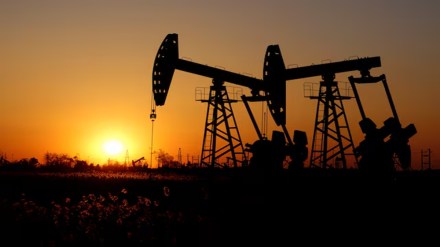The oil and gas sector has shown impressive resilience and growth over the past three years. Between October 2021 and October 2024, the Nifty Oil & Gas index delivered a 47% return, against NSE 200’s 46% gain.
The upstream oil and gas sector has benefitted from a series of government measures aimed at boosting production and improving fiscal health. Windfall taxes on oil prices above $75/barrel, the introduction of oil-linked gas pricing with a cap of $6.5/mmBtu and a premium on well interventions (currently 12% of the oil price, or $9/mmBtu) have helped enhance profitability for domestic producers.Indian refiners significantly gained from the uptick in distillate spreads during the Russia-Ukraine war, which sent Singapore GRMs soaring to $21/barrel, well above the mid-cycle range of $5-7/barrel. In addition, Indian refiners have been able to capitalise on discounted Russian crude imports, which accounted for 35-40% of total imports.
However, recent global macroeconomic challenges, particularly the slowdown in China, have put downward pressure on GRMs, which have since fallen to $3-4/barrel. Nevertheless, capacity expansion in the refining sector continues, albeit in a more measured manner, indicating confidence in long-term demand.
OMCs faced a mixed scenario. The freeze on prices for auto fuels and LPG during the peak of the Russia-Ukraine war squeezed margins, as rising commodity prices outpaced the OMCs’ ability to raise prices. However, the market has stabilized, and with lower oil prices, OMCs have seen margins return to healthy levels, particularly in auto fuels. The expectation is for stronger earnings in the second half of FY25, especially with the possibility of subsidy payouts in LPG towards the end of the year, where losses currently exceed Rs 200 per cylinder. Price cuts ahead of national elections, particularly for LPG, have kept the issue of subsidy payouts in the spotlight, adding an element of political uncertainty to the sector’s outlook.
The gas sector, which has been a key area of reform, saw mixed results. The integration of the pipeline network, which now spans nearly 24,600 km, has led to a 40-50% increase in tariffs for some players. However, the lack of fresh capital expenditure has led to equivalent tariff cuts for others. Demand for gas surged during the power crisis, benefiting bulk players and LNG importers, and there has been a steady expansion of the gas grid, particularly in the eastern parts of the country. While LNG prices have been stable, the ongoing development of the gas infrastructure, including the rise in LNG terminals, strengthens the sector’s long-term outlook.
The city gas distribution sector, meanwhile, has seen mixed outcomes. The penetration of natural gas in the domestic market has improved and the number of domestic PNG connections has surpassed 13 million. Additionally, CNG stations and pipelines have expanded significantly. However, the sector has faced challenges with reduction in the allocation of subsidized APM gas to priority sectors, which has been exacerbated by the natural decline in nominated fields and the imposition of premium pricing on new gas.
While the introduction of HP-HT gas and term LNG is expected to help meet demand, higher gas prices of $10-12/mmBtu could erode margins, especially as retail price hikes become more difficult due to lower oil prices and political pressures on fuel costs. Meanwhile, the industrial PNG segment has fared relatively better, though volatile demand from key industries like ceramics, coupled with the fluctuating cost of propane, has kept the outlook uncertain.
The petrochemicals sector remains under pressure, with low margins in key products such as polymer, polyester, and intermediaries. This is largely due to the ongoing slowdown in China, global economic uncertainties, and softer demand for plastics. While the Indian outlook remains more favorable compared to global peers, it may take a couple of years before the petrochemical cycle sees a meaningful recovery.
That said, the government is pushing for diversification and expansion into emerging areas like biofuels (ethanol blending, CBG), LNG retail for commercial vehicles and mining, and green hydrogen, while also encouraging investments in renewable energy and the electric vehicle ecosystem as part of the country’s long-term net-zero goals.
Overall, the Indian Oil & Gas sector has evolved significantly over the last few years, showing increased stability and resilience. Earnings have improved, and sectoral reforms have made companies more competitive on the global stage. However, despite this positive trajectory, the sector remains relatively undervalued compared to the broader market, trading at a price-to-earnings ratio in the high single digits. The sector also offers a solid dividend yield of 3-4%, making it an attractive option for value-seeking investors while presenting tactical investment opportunities.
The author is CIO, Aditya Birla Sun Life AMC
